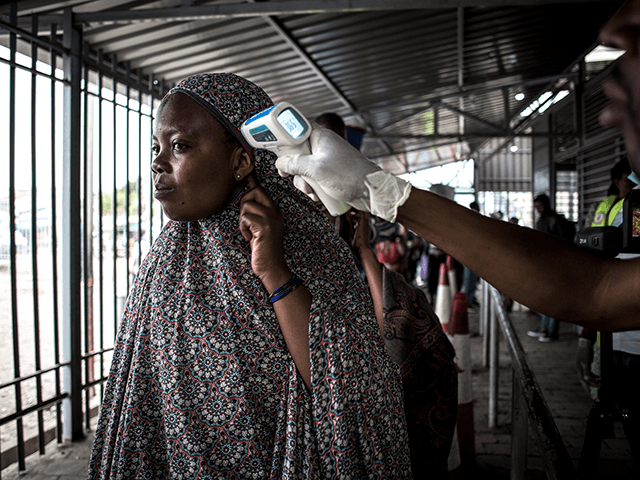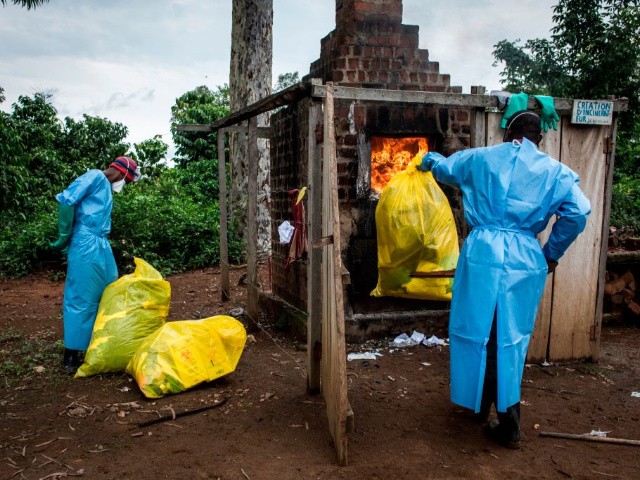The Democratic Republic of Congo (DRC) declared a new Ebola virus epidemic in the country’s northwestern city of Mbandaka, located in the DRC’s Equateur province, on Saturday, Sky News reported on Sunday.
World Health Organization (WHO) officials detailed the outbreak on April 23, noting that health authorities in the Democratic Republic of the Congo have so far detected only one case of the disease.
“The patient, a 31-year-old man, began experiencing symptoms on April 5 and, after more than a week of home care, sought treatment at a local health center. On April 21, the patient was admitted to an Ebola treatment center for intensive care, but he died later that day,” the WHO wrote in a press release.
Health workers at the Mbandaka health center reportedly recognized the man’s symptoms as similar to those of the Ebola virus and “immediately sent” his health samples to be tested for the disease, later confirming that he had contracted Ebola.
DRC health officials are currently investigating the source of Mbandaka’s latest Ebola outbreak, marking the “sixth Ebola outbreak in the DRC alone since 2018, the most frequent occurrence in Ebola history.” of the country,” according to the WHO.

A woman has her temperature taken at an Ebola screening station as she enters the Democratic Republic of the Congo from Rwanda on July 16, 2019 in Goma. (JOHN WESSELS/AFP via Getty Images)
The Equateur province of the Democratic Republic of the Congo previously declared Ebola outbreaks in 2020 and 2018. The 2020 epidemic produced 130 Ebola cases, while the 2018 outbreak caused 54 Ebola infections. The current Mbandaka Ebola epidemic marks the 14th Ebola outbreak in the DRC since scientists first discovered the deadly disease in 1976 near the DRC’s Ebola River (the DRC was then known as “Zaire”).

Health workers burn medical waste generated during the care of Ebola virus patients, on August 21, 2018 in Mangina, near Beni, North Kivu province. (JOHN WESSELS/AFP/Getty Images)
“Ebola virus disease (EVD),” as the WHO officially calls it, is “a rare but serious, often fatal disease in humans.” Wild animals can transmit Ebola to humans, who can then spread the disease to other humans through direct physical contact, such as through mucous membranes or broken skin. Person-to-person transmission of Ebola can occur through the exchange of “blood or body fluids from a person who is sick or has died from Ebola… [or] objects that have been contaminated with bodily fluids (such as blood, feces, vomit) from a person with Ebola or the body of a person who has died from Ebola,” according to the WHO
Ebola has an average mortality rate of about 50 percent, although previous outbreaks of the disease have shown mortality rates ranging from 25 to 90 percent.
The WHO, which is the international public health body of the United Nations (UN), said on April 23 that it plans to support a local Ebola vaccination campaign in Mbandaka in the coming days.
“The country [DRC] it already has stocks of the rVSV-ZEBOV Ebola vaccine available in the cities of Goma and Kinshasa. The vaccines will be shipped to Mbandaka and administered through the ‘ring vaccination’ strategy, where contacts and contacts of contacts are vaccinated to slow the spread of the virus and protect lives,” the WHO reported on Saturday.
He. The WHO referred to “rVSV-ZEBOV-GP,” or the research name for an Ebola vaccine marketed as “Ervebo.” The European Medicines Agency (EMA), which is the official health regulator of the European Union (EU), approved Ervebo on November 11, 2019, marking “the first time an Ebola immunization has cleared this hurdle”, the british academic journal Science informed.
“The decision by the European Medicines Agency (EMA) to allow the US pharmaceutical company Merck to market its vaccine means that the product can now be stockpiled and potentially distributed more widely than it is now, particularly in Africa.” Science observed at that time.
Erbevo was first patented in 2003 and until the end of 2019 it was administered on an emergency basis to quell specific acute Ebola outbreaks in Africa.
